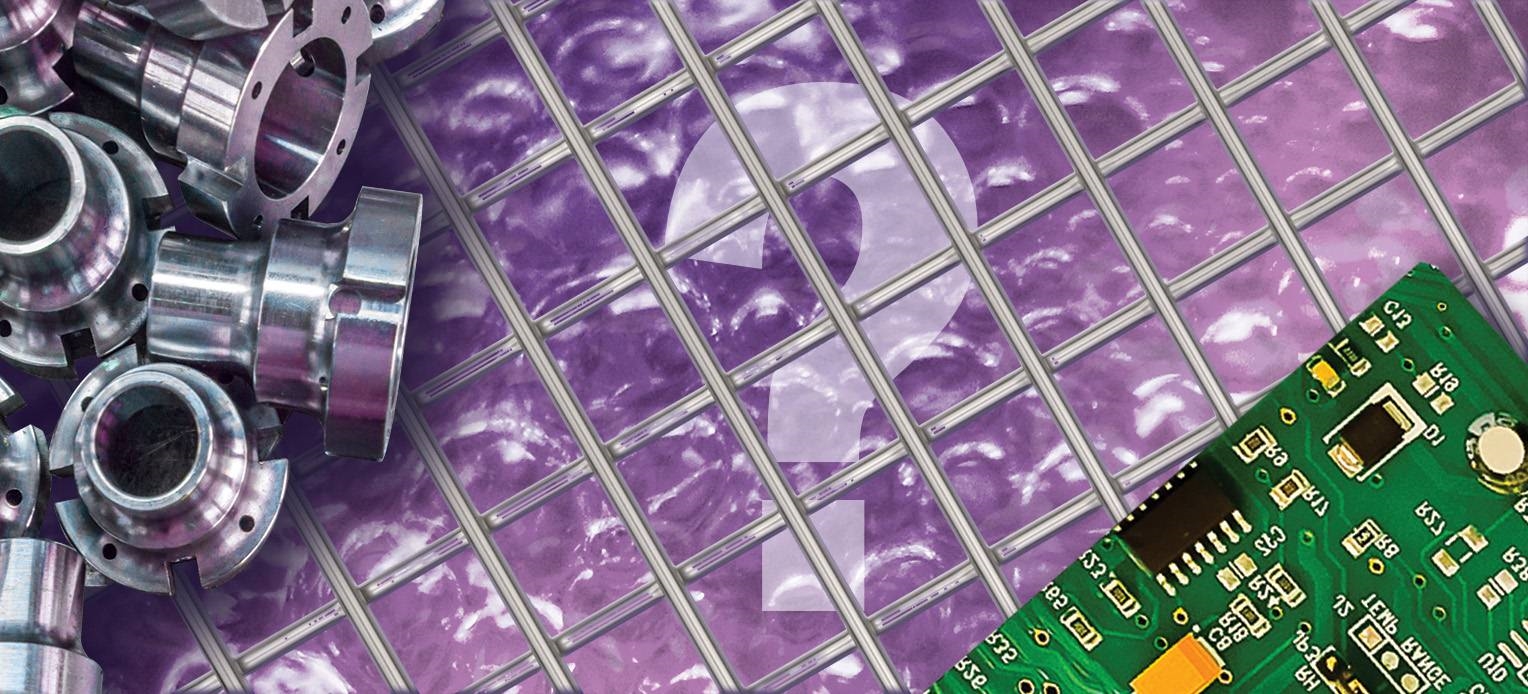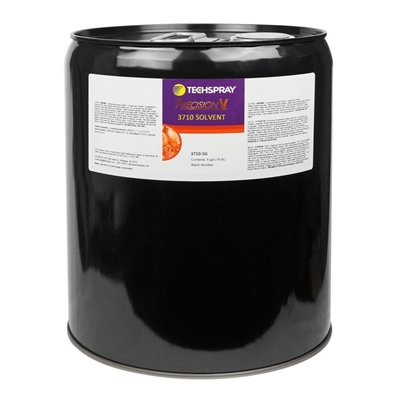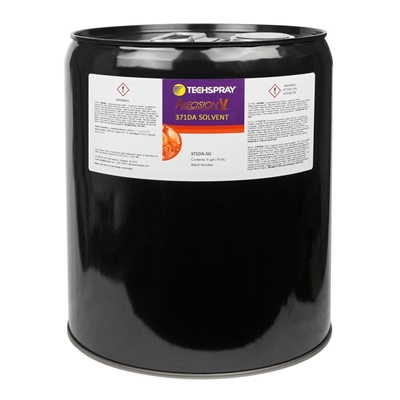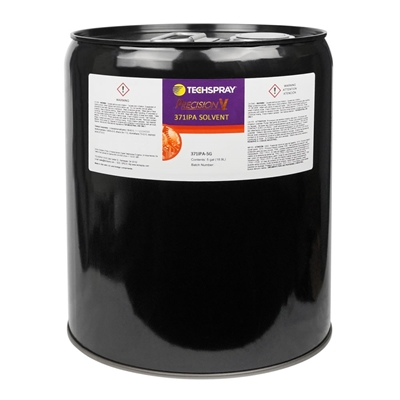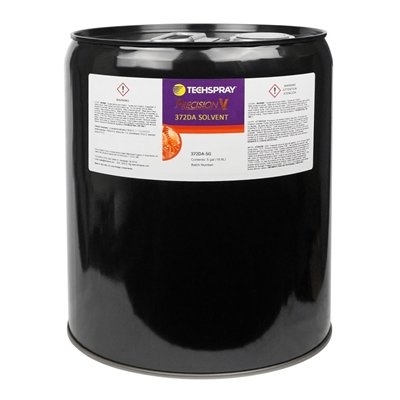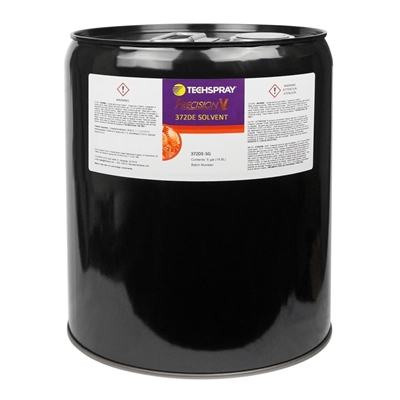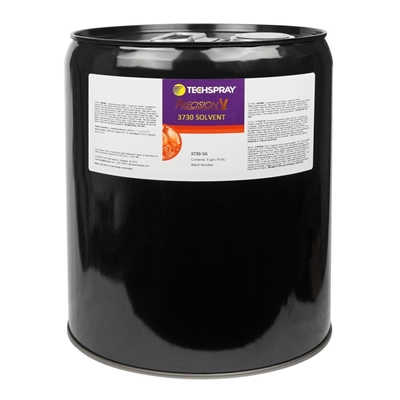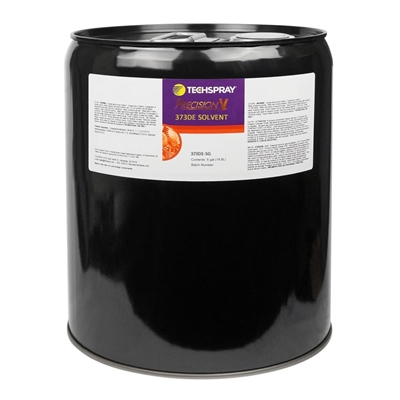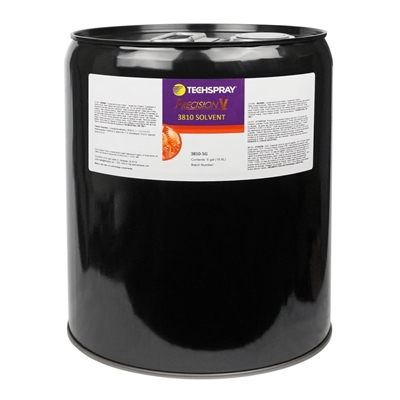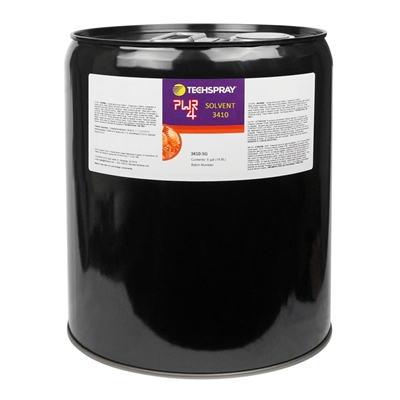Presenters
- Dr. Saroj Yadav - Techspray Marketing Director
- Patrick Oliver - Baron Blakeslee Sales Manager
- Kevin Pawlowski - Techspray Marketing Communications Manager
Table of Contents
- 3M is Discontinuing Novec Solvents
- What Are Novec Solvents?
- Options for Novec Users
- Direct Drop-in Replacements for Novec
- Qualify New Chemistry to Replace Novec
- Techspray Optimized Novec Replacements
- Future-Proofing Your Cleaning Process
- Regulatory Pressures
- Regulatory Trade-Offs
- What Are PFAS?
- PFAS-Free Solvent Options
- Challenges of PFAS-Free Solvents
- Options for Cleaning Processes
- Open-top Vapor Degreasing
- Airless Vapor Degreasing
- Low-Boiler Vapor Degreasing
Kevin Pawlowski:
I'm your commentator today. Again, introduction. Kevin Pawlowski, marketing communication manager over at Techspray ITW, Contamination Control. And today we're going to be covering 3M Novec replacements. And now this is a continuation of an earlier webinar we did a few months ago, but we're going to be focusing on future proofing your cleaning processes. What we mean by that is we get a lot of phone calls on, okay, yeah, we want 3M Novec replacements, but we want to make sure that whatever we switch to will continue to be legally used. We can continue to use it ongoing for the next X number of years. And it can be a tall order, but there's things we can talk about to start up a conversation and so we're going to be getting into that.
Okay. With us today is Dr. Saroj Yadav, marketing director over in the same company, she's my boss. She is over the marketing department, over at this company, over at Techspray and also formally technology director. And let's see, you're a, what's your degree? What kind of chemist?
Saroj Yadav:
Oh, I have an organic chemistry degree and PhD.
Kevin Pawlowski:
Organic Chemistry. That's right. All right, so in Saroj's information, her contact information is right there on the screen. Also with us kind of, you can't see his face but you'll hear his voice is Patrick Oliver. Now Patrick is a sales manager at Baron Blakeslee. Okay, so Baron Blakeslee is a preeminent manufacturer of vapor degreasing equipment. The focus today will be on precision high-end cleaning and vapor degreasing. Now we'll touch on other types of cleaning, but mainly we're going to be focused on vapor degreasing today. Quick, let me cover the agenda really quick.
We will be talking about the Novec discontinuation options for replacements and then what we're talking about future proofing your process, the regulatory trade-offs involved with that because it's not straightforward at all. And finally with Patrick, he's going to finish up talking about the vapor degreasing options as you choose those future proofed if you will. And this is really our term, but just what we mean is solvents that have less regulatory risk to them. He's going to be covering the different equipment required for those types of solvents.
3M is Discontinuing Novec Solvents
Really quick overview and I think if you've been through our webinars before, these slides are going to look pretty familiar. But 3M back in December of last year, we got a surprise. The whole industry got a surprise that they decided to exit the category of PFAS chemicals. By the end of 2025, they're no longer going to be manufacturing in selling PFAS chemicals. And this includes Novec line of solvents 7100, 7200, 7300 series.
Now with our customer base is many of our customers use these cleaners for high precision vapor degreasing and so that's why we get in so much about those types of issues. Now we won't be touching on for example, thermal transfer type of applications. This will be more focused on cleaning.
Their state of reason is accelerated regulatory trends. Lots of speculation on what that means and it's probably complicated. It probably deals with some of their stockholders and their feelings, different issues they may have with their facilities, but we won't get into that type of speculation. But there's probably reasons besides just regulations on the books today, but that reason has spooked the industry. What does that mean? Do I have to worry about these regulatory trends? Certainly do, but no, some of these issues aren't in immediately an issue and they did state stockpiling is discouraged. What does that mean? That just means boy, we should all be paying close attention and making some decisions now as opposed to waiting to 2025 because they may not be shipping consistently through the end of that. They are maintaining that discretion.
What Are Novec Solvents?
Okay, so Novec solvents, again, these are solvents for high precision cleaning, other things as well. Okay. But we are, we're going to be dealing with high precision cleaning vapor degreasing and basically it works very well in a vapor degreaser because it quenches flammability of other solvents very, very well and falls into what we call an azeotropic or near azeotropic solution. It stays together as it's boiled and reconstituted over and over again in a vapor degreaser. Medical device manufacturing, aviation MRO, it's also used for oxygen cleaning because for safety reasons in its neat form it's used for more rinsing because it doesn't have a lot of solvency. But then it's also mixed with other things to increase the solvency depending on the soils. It's mixed with alcohols and trans to bring that solvency up. It's also added to solvents to improve, if you can believe it, regulatory compliance.
You see the irony here is the regulatory compliance is a problem but also it can be a good thing. It's complicated and we will be getting into that, some very interesting diagrams to cover that. Saroj, I think you've got this one.
Options for Novec Users
Saroj Yadav:
As Kevin mentioned about what these 3M Novec solvents are, so what are the options of our current Novec users? We just outline these three options and so the first one is a direct drop-in replacement where the end user would be without changing any current process or equipment, keep running their operation with using the drop-in replacements. The second strategy would be qualify for the new chemistry and that's where it is a longer term solution where the focus would be improving the performance and then lowering the cost as the solvents are not the cheapest available in the marketplace. That gives you more leverage into this type of second set strategy. The third option could be moving away from these PFAS chemistry and that could be heavy lift on the end user, it could be changing the chemistry completely what they're using currently and then even the equipment also, which Patrick want to talk about in the later slides.
Direct Drop-in Novec Replacements
As I've mentioned that there are first option where you don't have to change any operation or any process which you are currently using that comes under to direct replacement. And these direct replacement is where you use the same Novec material, using the same molecule either from 3M which is discontinuing to 2025 or from other manufacturer because they are noted anymore so you can get from it. And so we 7100 which is a mixture of two isomer and as you can see the gas chromatography on this slide shows a single peak because it's harder to actually purify or see the two peaks which are embedded together side by side. That has been one of our focus to do as a direct replacement under Techspray and this chromatograph is from our lab which shows side by side migration for the 3M Novec material and our Precision-V is zero. The same we do have other equivalent from our Techspray just not 7100 but the other straight need 7200 and 7300 and the blended product with trans and alcohols.
This means that you don't have to go for a qualification process because these are molecular identical products and you don't have to you can still use the same equipment and same process. Feel free to reach out to any of us to ask for any other details we may need for your process qualification.
Qualify New Chemistry to Replace Novec
The second one is for qualifying new chemistry, which is our focus is on this side of qualifying is using the same equipment and so there are some expenses and disruption to make a switch. There would be a little or no capital expenses for new equipment. You now do require a qualification under this category and there are some options which are already known such as NPB, perc and TCE, which are more dangerous, toxic solvent and if choosing those would be a huge step backwards. Highly regulated stuff and the EPA is being behind these categories of solvents for long.
There are known chances of organic organ failure [from these solvents] so we don't want to use those ones anymore and we won't recommend in our discussion further into this seminar. This would be your chance to improve the cleaning efficiency and possible material cost savings when you're choosing this new qualifying new chemistry. And as I mentioned, the Novec has been very scarcely available and the price of the Novec has been triple or four times than what we've been getting for the last couple of years. This second option would help us to for cost saving purpose. These chemistry not only to be effective but they should be having improved cleaning performance and then should be compatible with the substrate that being cleaned and enough solvency to remove the soil. The chemistry should not possess the dangerous aspect of PFAS and the toxicity persistent in the environment. That could be one of the things which you should be aware for choosing your new chemistry in Novec.
Kevin Pawlowski:
Let me just do a quick summary on this. Okay, so option one is the immediate solution. Okay, so you're looking to for that immediate solution to cross and drop the same stuff in your machine. Okay, so let's say you are using 7100, you want the exact same thing in they're already approved. You don't have to do a lot of qualification and what we mean by that is cleaning qualification. You, I'm sure especially if you're an FDA approved type of process, you're going to need to do some type of a review for that qualification and we would provide that documentation. I do you have a question here that says do we have any tier one medical device companies value? Have we successfully gotten that through with this approach? Saroj do you have an answer? I don't believe we have but do you know of any?
Saroj Yadav:
Not currently. Majority of them are trying to go for option one because the time and the validation has a lot of dollars attached to it. they have been using Novec without any impact before in the industry. Their first approach is the immediate solution which Kevin and we've been talking about. They're currently using the same stuff which they've been using before. I haven't seen much deviation from for this type of qualification of new chemistry. However there are a few companies which has approached to us and we are doing some research and development work for moving towards this new chemistries which on yeah so we do have not yet that they have been using or they moved towards this second approach but they are trying to move towards the second approach in future with the R&D from both from our side and from them being doing the qualification process.
Kevin Pawlowski:
The FDA obviously is a challenge. The theory here is you're treating it as at that point like a commodity solvent and so it would be similar to let's say changing your source of an acetone, you wouldn't generally have that change your qualifications for the FDA require a requalification. Whether that can be done or not, that needs to be proven out and so it's something that would be for you as the user to work through but we certainly can support that effort with the documentation, the testing to hopefully make that happen for you. Okay.
Techspray Optimized Novec Replacements
Saroj Yadav:
For many years Techspray has been offered products in marketplace for effectiveness and they have been well keen about putting the products which meet the regulatory environment and just improve our product portfolio over the years. In that regard we do have these new products launches which we did recently and they come under PWR-4 or Precision-V. This one, this whole slide is based on what type of chemistry you can use for different application for heat transfer or just regular rinsing installment for the first 3810 and then the other are based on if you have a sensitive plastic or if you are just using general purpose cleaning. Then you have a different option available in Techspray product.
Kevin Pawlowski:
I do have a question, what's the cost comparison between the drop-in replacements versus the Novec blends? I'll just cover this broadly Saroj is I mean basically by drop in, let's just start with I'm assuming you mean the more optimized solvents. But let's start with the first option where it's a direct replacement, we're going to be okay, we're going to be quite a bit higher than especially you might used to have paid last year. Now 3M's pricing has gone up as well but we're still going to be higher. Let's face it, 3M makes the stuff so that does put us at a pricing disadvantage and so understanding that we could be a secondary source as you run into difficulties with your 3M supply. Not expecting necessarily to displaced 3M but on your supply chain side to keep that secure. We're happy to fill that and add that service to you.
Now in terms of the second option of a different chemical to replace it that does the same thing but would need qualification, it depends. Generally speaking we're going to be competitive with what you used to spend on 3M in some cases higher, in some cases lower depending on the type of formulation and what we're trying to achieve. In general the less you're worried about plastics for example metal cleaning, we've got more latitude to get that price down. If it's a higher precision where plastics becomes the issue or it's strictly a straight 7100 cross, then it's going to be more equal to what you're used to paying there. There's not going to be necessarily a great price advantage of what you're seeing in the past. Saroj does that sound about right?
Saroj Yadav:
Yes, it's correct. Thanks. Yes.
Future-Proofing Your Cleaning Process
As the topic of the seminar, what's this future proofing means for our cleaning process? The biggest question, how we can make our process future proof for longer years and I know we put 10 years, it could be longer than that or it could be these regulation could make it go this strategy even something else. We don't know, it's just the future as everybody predict. How you make this process or this new type of chemistry as the long proof for coming years. Where do you start from your cleaning requirements, getting what you need for cleaning performance or what compatibility or what type of plastic you are using and what type of regulatory compliance you want to meet with those type of product. And then build your process around that. As we've mentioned that we are going to just cover the vapor degreasing portion in this seminar. This is in the future slides. It's more of the concept for vapor degreasing as a future-proofing.
Regulatory Pressures
There has been regulation on the books for years in the writing for NPB per methylene chloride and TCE. These are currently in final stage under EPA regulations and similarly the VOC is state by state. California is the leader in that and other states follow the suit once California decide which path they're going. There are trade-offs with the lower VOC because some of these lower VOC could have higher global [warming] potential and we can walk out that the trade-offs is not considered into the isolation. We have to look the whole picture of what we are using.
VOC in California made is pretty challenging to use any higher VOC product especially when the other states follow the suit. The global warmer are having regulatory pressure currently and there are not hard restriction but there are pressure for state-to-state and country to country to regulate them. And such as the very common chemicals which we've been using is and that could phase out soon due to high global warming potential associated with it.
The other stuff is the new topic recently is the PFAS, which we know on as forever chemical and we're going to speak about in the details in slides later. There in US, they're still evaluating these PFAS and there is no formal announcement around it and EPA is still gathering the data listing of the PFAS materials as of now.
Regulatory Trade-Offs
What would be the trade-off? It's just like how you balance these, your future proof process and that's the magic. How do you want to be, which chemistry do you use for next qualifying stages for which can last longer? This diagram here, we are excluding all the toxic vapor degreaser such as TCE, nPB, perc and we think that you won't even go around those type of dangerous chemical. What we left here is the very broad category which are water based chemicals, acetone, HFO’s, HFE’s which is also called, some of them are Novec product, hydrocarbon and alcohols. Where are those fit in the probability side of things?
In this chart, if you see the water is tuck at the corner and basically have the highest probability that you can use this product forever like indefinite time because water according to any regulation, it's safe and not going to be banned. Everyone knows that straight water is not going to be, it's not easier to have a better cleaning efficiency with the straight water. To improve the efficiency of water you add stuff or you add additives which could make it towards more regulatory type of pieces until that quarter.
And so there is no perfect solution. That's what it is. There is no perfect solution attached to any type of chemistry out there or there are some blend which is known to us in this area. This diagram is not very clean but it gives you a visualization where these chemistry fall under and there is no one solution which will be the best solution but it could be a combination of different parameters which we can be put into future-proof about.
What Are PFAS?
Let's talk about these PFAS, what these PFAS are and I'm sure you guys have been heard all these definition since the 3M came out with their announcement when they're phasing out. In general PFAS stands for per- and polyfluoroalkyl substances. And if you dissect these words poly means your polymers which is many and the fluoral is fluorine atoms and akyl is your organic molecules, carbon hydrogen. Fluoral means you have everything in there which means that your carbon and hydrogen is carbon is attached to all the fluorine atom and there is no hydrogen in it. That's the per- and polyfluoroalkyl substances. The other terminology which you'll keep appearing is forever chemicals and I believe this forever chemical is used without getting a knowledge to our type of industry that every chemicals comes under PFAS are not dangerous or are not forever chemicals.
These PFAS are associated with some global warming potential which are very low and they actually doesn't exist for longer term in the environment. Whenever these lower global warming potential PFAS pump, they just integrate as quickly as any other known chemical out there. The full chemical doesn't mean that all the PFAS the dangerous just know what type of the impact is from these type of materials it's coming from. PFAS has been, they have a great properties because of the cloud carbon and flooring board which is very strong and very stable and due to that it makes very highly suitable for cleaning application and used in other type of application as well. And the same app properties makes it used as a fire suppressant or flame suppressant. They are used in the blend where you have to quench the vulnerability piece. It's highly blendable product and that has been known to mankind for years.
The other beauty of these product are that they are low surface tension and high density. For low surface tension it means that they can go into a tougher areas where as tight areas into on the substrate and it moves around and takes other chemistry as well to those tighter areas to clean better. To achieve better cleaning and better overall cleaning for the substrate. And the high density would also help us to, if you are using an vapor degreasing setting that it helps to take the water, which in the paper disease setting, so as I mentioned, they are being used in particular in four years and they were actually launched by 3M to replace these dangerous chemical nPB and TCE and perc. Just to keep your order for why they have been existing in the nature and why they're widely used.
Kevin Pawlowski:
Yeah, let me add, just to add a finer point to this because this ties in with the earlier slide, which I apologize if that's confusing. But that slide is our attempt to show the nuance that we really are dealing with. When you talk in the probability of something being regulated and restricted or banned, I mean we don't have that perfect information and the definitions aren't consistent depending on who's doing the defining, whether it's at the state level, country level. The term PFAS, how it's being defined on various lists including the EPAs lists can vary. For example, why would we have something in the middle for PFAS is because it's not clearly defined, it's not for example HFO, there are HFOs that are technically PFAS but that are not on the EPA’s PFAS list. For reasons that probably have nothing to do with the chemical, more to do with filings and whether or not there's a cast number available, things of that nature.
And so this diagram is all about, okay, the closer you can get to that corner, the better, the higher probability you're not going to run into restrictions. It's almost impossible if you're doing any cleaning to get perfectly into that corner. It's a matter of okay, which trade-offs are going to be acceptable depending on where you live, what industry you're in and all of that. Then this is a real sticking point on the NPB TC, the really nasty toxic things. Now we are not really considered those as alternative you'll see in this footnote because there are regulations that are really, really far along on those. And so the probability is very, very high that those are going to be restricted and so we are really pulling those out of the equation as we are CFCs because those have been out of the market for 20 years or so.
PFAS-Free Solvent Options
Saroj Yadav:
As we did cover these PFAS, free solvent option in our diagram so I don't want to waste too much time over it here, but as you all know we have PFAS free option in terms of hydrocarbon solvents which are naphtha and Kerosene for example is being used as in some degreaser or alcohol and modified alcohol has been known to be very effective as PFAS free solvent such as IPA or ethyl alcohol. And Glycol ethers also are considered to be a PFAS free solvents, which can be a blended or just used in very few cases used as a straight solvent as a degreaser such as your ethylene glycol monobutyl ether, propylene glycol Monomethyl. And then there is a bio based solvents which are PFAS free. They are mostly soybean oil derived or terpene based solvents that can be used as a degrease source.
Kevin Pawlowski:
I have a question going back to this diagram Saroj and it stumps me but I'm not a chemist so hopefully it means something to you. Where do HFCO's fall on this diagram?
Saroj Yadav:
There are very high global warming potential so they would be…
They are not like the VOC would not be much of a concentration on these type of material for HFCs, but they're more of ozone depletion. They're known for ozone depletion, that's why they're not even here.
Kevin Pawlowski:
Probably around where the HFE is? Okay.
Challenges of PFAS-Free Solvents
Saroj Yadav:
Yeah, so this one is as we are discussing there are PFAS free options but to be aware of, there are some challenges associated with the PFAS free alternates, which we know. The one of them is your lower solvency because PFAS are having their slight, they do have a slower solvency but with the blending of option they have, they can be used as an aggressive solvent as a... so I'm sorry they've been using as there are challenges as you shared with the slower solvency with these PFAS options out there. And the compatibility with certain materials, some PFAS free solvents may not be compatible with certain materials such as sensitive plastic or electronic component. It is important to ensure the type of solvents you are using that is compatible for decrease or differencing and to avoid any potential damage.
The odor and liability, some of these hydrocarbon like terpene does have a stronger odor so you want to make sure that's not a problem for your process or the people who are using it. And similarly with the PFAS pease solvent option are not always nonflammable. They comes with some of the trade-offs with the plant ability associated with the events. And then the regulatory compliance I know PFAS has been under regulation challenges recently but the PFAS solvent, they're always not environmentally friendly. There might be some other restriction associated with these type of chemistry so be aware of this.
Kevin Pawlowski:
Now just a slide this strikes me is everything we've hit you with, if you remember that slide a few slides ago where the guy is tearing his hair out, trying to keep track of all this stuff, you might be feeling that way. Because our lives in the solvents, fault solvent business is all about trade offs. There is no perfect solution. Ever since CFCs went away, which were beautiful in so many ways except for that big ozone hole that was floating around. But otherwise that stuff worked great. Ever since then it was a matter of blending and getting as close to the benefits as we can to that, but it's all these trade-offs as we do this and so we're here to help you through that. Okay, so rather than you trying to sort through this stuff, you've got Dr. Saroj here that can help you through that.
Just keep that in mind is as you're going through this, you're trying to figure this out, we can certainly help sort this out for with you.
Options for Cleaning Processes
Now just I want to cover really quick just some alternative processes. Again, not going to dwell on this, but just to acknowledge that there's other things in this world besides vapor degreasing. Hopefully Patrick didn't hear me say that, but for high-end cleaning some of this is appropriate, some of it not so appropriate for high-end, high level of cleaning class three type of cleaning. But certainly CO2 cleaning, plasma cleaning certainly can operate in the class three environments. Steam cleaning, I know Foresite [owner Terry] Munson, he's doing some good work with steam, some aqueous or semi aqueous solutions and steam, so some interesting stuff. He has centrifugal, tumbling systems that's more agitation and not quite what you would see in a class three environment. That's more heavy industry I believe. But one thing I don't include in the agitation side is the ultrasonics, which is part of vapor degreasing as well.
Spray and air batch inline systems, water-based type systems, some solvent systems as well. Those can get into the class three type of cleaning as you get in the water-based cleaner. Now one thing that I want to note there is Techspray does offer some solutions for batch and inline systems. We're not covering that today, but we certainly can help if you want to go in that direction trying to get close to that corner of that diagram and get into the water-based cleaning. And then finally vapor degreasing. And so we're going to get Patrick on now.
Open-top Vapor Degreasing
Patrick Oliver:
All right, thank you Kevin. Again, this is Patrick Oliver with Baron Blakeslee. First of all, this slide we're talking here about open top vapor degreasing, which I'm sure everyone on the meeting is familiar with and you're likely to be using this type of equipment with the Novec solvents. Again, these types of systems are designed for nonflammable halogenated hydrocarbon solvents like the Novec. Typically the boiling points of these types of solvents are in excess of 90°F. When you're looking at some of the replacement drop-in type solvents that ITW offers to replace the Novec solvent, it's likely that they can be used in your existing vapor degreaser. Certainly I think in general, whenever you switch from one solvent to another, it's always prudent to evaluate materials compatibility in respect to your machine.
You know may have to consider composition of seals, elastomers, gaskets, pumps, other components of your system to make sure that they are indeed compatible with the new materials. However, I think with the formulas that ITWs developed and in some cases basically the identical molecule, there should be no issues. But again, it's always prudent to evaluate. Looking at a machine like this what we're doing here in this slide is we're looking straight down into the tank of a conventional two sump vapor degreaser, an immersion degreaser are oftentimes equipped with ultrasonics with both primary and secondary sub-zero free board refrigeration. A degreaser of this type is important to use for efficiency, minimizing emissions, mitigating operator exposure, and of course being compliant with environmental regulations insofar as evaporation of solvent being controlled. That secondary coil, that secondary sub-zero freeboard coil, the topmost coil there is very important in adding efficiency and minimizing evaporation and emission.
Hopefully everyone out there is using a modern open top vapor degreaser like this, and again, it's very likely that ITW is going to have formulations. You can drop right in, but as I said before, always prudent to evaluate composition of materials, etc. And there may be some changes in settings required. For example, all of the controls on vapor degreasers are based on the boiling temperature of the solvent. There may be some other differences based on the physical properties of the solvent that affects distillation rates or some other aspects of the process. But again, I think we're talking about drop-in replacements, so you could probably expect very similar performance from a chemical and environmental emissions type standpoint. All right, so here we have some really simple graphics of open top vapor degreaser. I'm sure everyone operating a degreaser is familiar with these operations, but essentially you've got a couple different types.
The simplest form being vapor only that you see over on the right side of the slide where parts are being processed strictly in a zone of saturated vapor. Parts are colder than the vapor temperature and therefore the solvent condenses on part surfaces, droplets of condensing solvent form, dissolving soluble contamination which goes into solution in the forming droplets that gravity pulls off the surface and this rinsing flushing action occurs until part and vapor temperature equalized at which point cleaning occurs, drying occurs, the process is completed. That's the simplest form. Again, with materials like this you're looking at solvents now in the modern era that are generally going to boil below 120 degrees Fahrenheit. Vapor only processing may be appropriate, but a lot of it depends on the mass, thermal mass or the part you're processing, the specific heat of the metal you're processing and the ambient temperature in the room.
If you've got parts of relatively low thermal mass, low specific heat in a vapor only process they could potentially equilibrate with vapor temperature more rapidly than cleaning could occur. And this could be true with lower boiling solvents could be a challenge. You may if your cleaning application falls into that category, have to consider an immersion degreasing process, which is what you see on the left side of the slide. In an immersion degreasing process, clean distilled and generally filtered solvent is accumulated in what is called the immersion sub. Parts can be placed down in that liquid and left in that zone until they are clean, then elevated up into the vapor zone for a final condensing rinse and drying to occur. In immersion you can add ultrasonics to enhance the mechanical energy, the cleaning process, and provide more effective cleaning. And of course in conjunction with filtration, remove inciable particulate.
Again, this system is depicted here is a modern iteration of the open top vapor degreaser having both primary condensing coils and the very important secondary sub-zero free board refrigeration. Which generally all modern degrees or should have, if you had two machines identically sized, one of the units did not have that secondary subzero free board refrigeration. That particular unit's emissions would be about double that of the machine that was so equipped with secondary subzero free board refrigeration. Going forward looking at replacement solvents, which are lower boiling, could potentially be more evaporative it's important to perform these types of operations in modern efficient equipment. That's basically the open top.
Airless Vapor Degreasing
Now we can enhance this to take it to a completely different level with a vacuum vapor degreaser. All right, in a vacuum degreaser, these processes occur using the same chemistries and the same basic process steps, but what the difference is, they are completely sealed and isolated from the environment.
Everything occurs in a single chamber, a sealed chamber, and it all happens under vacuum. The emissions from these processes, we generally describe them as being the lowest technically possible. While there are no processes that are emission free or zero emission. Even in relatively large airless vacuum vapor degreasers, there's emissions at the end of the cycle can be on the order of literally a couple apart per million. The emissions are very, very low and the performance is extremely enhanced given the nature of the process. It's called airless because at the beginning of the cycle the parts are placed in a sealed chamber and a vacuum is applied and all of the air is ejected from the process chamber. The chamber and the parts inside are completely under vacuum. One of the benefits of this vacuum technology is that there's no air which could potentially become a barrier between the solvent use for cleaning and the substrate you're attempting to clean.
In other words, imagine a blind hole or imagine a very low standoff between a component on a circuit board and the board itself. Imagine a very long tube with a very narrow internal diameter. If the air is not displaced from those surfaces, the solvent you're trying to use for cleaning can never come in contact with the surface. But in the vacuum process when the air is all ejected, it's very easy to get the solvent in contact with the substrate. And then further on, we go through a process where the recovery of the solvent is, as I said, nearly total and the drying is very complete and very thorough. Under vacuum, the vapor pressure, the solvent is very much elevated. The boiling point is depressed and it's very easy to dry the parts to recover the solvent. These types of systems can be used with traditional halogenated hydrocarbon solvents like the Novec or any of the modern ITW replacements.
Essentially fluorinated solvents blended with trans one, two, dichlorethylene as the active ingredient, possibly some alcohols. That's a very common application for these vacuum degreasers. But if you're looking at other types of solvents, alternative processes, these can also be used with hydrocarbons and in many cases combustible or flammable hydrocarbons like acetone, like isopropyl alcohol, aliphatic hydrocarbons as well, which are something like petroleum distillates, not exactly what we're talking about here, but imagine something like kerosene or mineral spirits. Those are often similar chemical formulations used in these types of machines.
And finally, modified alcohols, which are like glycol ether, high molecular weight alcohols, those are often used in vacuum degrading as well. There are certainly trade-offs with using these types of materials. Anything flammable like acetone or isopropyl alcohol, the cost of the equipment increases because oftentimes we're building these units to class one division to standards. Where flammable solvents are in the system and therefore flammable vapors could potentially be present under certain conditions, even though they may be an anomaly, they could be present.
We designed the machines to be intrinsically safe, explosion proof, but this is not really where the cost comes in of using solvents that are flammable. The real cost comes into hazard rating your area, controlling static in the area. Imagine making a room that is, again, class one, division one or maybe class one division two compliant where flammable vapors are present all the time or could potentially be present. It gets quite expensive. You may have to install fire suppression, you may inevitably have conversations with your local fire marshal or your insurance underwriter if you're implementing a process like this. There's more to think about when you're using a solvent like acetone, like isopropyl alcohol equipment's designed to use it, but your area's got to be designed to accommodate that solvent and the equipment. That can add a lot of cost. That may not be apparent or obvious when you're considering something like this. To the extent of the aliphatic hydrocarbons and modified alcohols, while those may not be flammable, in other words, flashpoints above 140 degrees Fahrenheit, they are combustible and we design the equipment accordingly to accommodate these types of solvents predictably and safely.
One of the challenges of using those types of solvents in a vacuum degreaser, especially when you're removing petroleum based soils, is that petroleum based soils are a mixture of a variety of fractions, different molecular weights, different carbon chain lengths of hydrocarbons. Some of the lighter hydrocarbons, the more evaporative fractions actually end up in the distillate of these types of systems. In other words, we're filling solvent in these vacuum degreaser just like we do in an open top, but when you're using an aliphatic hydrocarbon or a modified alcohol, you may get some organic contamination into the sump, which is inevitable. You can potentially have residues applied to parts and the solvents in this case, the aliphatic hydrocarbons, the modified alcohols given their physical properties generally exhibit relatively low distillation rates. Sometimes distillation is not done continuously like it is with halogenated hydrocarbons. And oftentimes you have to do distillation offline, like when you're not cleaning .parts, you have to choose to clean parts or distill.
Sometimes when complaints arise using aliphatic hydrocarbons and modified alcohols instead of film or residue is left on the parts because the throughput, the soil loading and the reduced distillation capacity can end up leaving residue on parts services. Of course, you can design around this with enhanced distillation, larger volume storage tanks. There's lots of things you can do from a design perspective, but again, this all adds cost back to the equipment.
I'll just show just real briefly, we talk about the advantages of airless vacuum vapor degreasing. Yeah, obviously a reduction of emissions. This technology offers the lowest emissions technically possible, and even that little tiny puff, couple of part per million of solvent that exits at the end of the cleaning process can be captured into a carbon drum for what is essentially zero emission. Because we're pulling a vacuum on the solvent, we remove all the dissolved gas in the liquid and to make sure ultrasonics work a lot better if the system isn't good with ultrasonics.
You're also cleaning with a more homogenous material, the solvent wets the surface of parts better, it works a lot better under vacuum. The drying occurs so thoroughly, so readily because again, we do pull a vacuum at the end of the cycle. These systems are automatic and they are very consistent. The process occurs without any operator intervention and essentially is consistent, repeatable happens the same way every time. And then finally, we do offer versions of this technology that can be used with solvents like acetone, isopropyl alcohol, et cetera. Keep in mind, you may need to hazard rate your area when using these types of solvents.
This is just a real quick example of one application of this technology where it's used to clean circuit works. In this particular case, this is a vacuum degreaser. The company who was using this machine was in a part of the country where the solvent they were using was not permissible for use in their area. And the only way they could get an air permit to use it, and it was none of the types of solvents we're talking about here. This is one of the toxic solvents, but we sold them a vacuum degreaser and they were able to use that solvent in that area and get an air permit and operate in compliance. But essentially this is a system where you can clean circuit boards with vapor or spray or immersion or ultrasonics. The process can be quite versatile and the emissions, again, the lowest technically possible.
Kevin Pawlowski:
I do have an interesting question from Barbara Kanegsberg [of BFK Solutions], the “cleaning lady”. By the way she, we presented with her in the last of this, the last one of this series. And so friend of the webinar group here. Can the same airless system be used interchangeably for modified alcohol and isopropyl alcohol or acetone or specific design changes needs? Basically can the same equipment be used for and swapped out the different modified alcohols, isopropyl, all of that?
Patrick Oliver:
It depends on the system. In other words, I don't know it's possible to make a blanket statement like that across other OEMs. I mean, all I can say is if we build a system with the potential conversion in mind, the answer is yes. There's switching solvents in a vacuum degreaser is not quite as straightforward as switching solvents in a conventional open top. Pumps, heat exchangers, the method you're using to heat steam, hot water, hot oil, there's a lot of different variables that need to be considered. It's possible. But if it's designed that way from the onset, then the answer is yes. Now, in other words, if a machine was originally built to accommodate a non-flammable solvent and you want to convert it to a flammable solvent, everything would have to change electrically. It would be a significant change. I think that's the question that really needs to be evaluated on a case by case basis, but it's possible.
Low-Boiler Vapor Degreasing
This is a piece of equipment. This is an open top vapor degreaser, which is designed to use the HFO type solvents. One example on the market being Honeywell Solstice PF. Now we can do solstice PF and similar solvents and a vacuum degrees are very easily very well. When you use these materials in an open top degreaser there are a lot of considerations, these solvents as slide says, boil below 90°F Solstice PF in particular boils at 66°F. It's a refrigerant. It comes in a refrigerant cylinder and while it has relatively high late heat of vaporization, once you start adding energy to it, the form of heat or shear, it wants to expand just like a refrigerant does. And there's a lot of things we got to do with a solvent like this to handle it predictably, and it is not a drop in replacement.
You cannot put a material like this in a conventional vapor degreaser without experiencing high emissions. There's some other things that happen with solvents like this. You've got to take special care to process it. For example, like in a pump loop, like in a filtration loop, you've got to use a lot of insulation and the suction of a pump has to be cooled to prevent it from cavitating. Because the material will vaporize in the line and then you don't have flooded suction and the pump can cavitate, the pump can be damaged. You can't transfer the liquid predictably. We don't use threaded piping with materials like this. We weld or flange all the piping or use some cases compression fittings, but we do a lot to make sure there's no leaks because this solvent can come through very small openings that regular halogenated solvents go. The fact that it boils at 66°F means that when parts exit the machine, they're often below the dew point in the room.
And depending on the environment and the part in question, you may have to contend with post degreaser condensation of atmospheric moisture, which could be a real disaster on some parts. In some cases we have to superheat the parts. That's what you see in this slide over on the left, that graphic where it says what that is a structure mounted above the boiling sump degreaser through which circulates a heat transfer of fluid and then post immersion, you can see the hoist over there on the right of bursting the basket down in the liquid. Then you would put it up on top of the superheated platen so that way it can warm up and elevate beyond the dewpoint in the room. That way you don't get that post degrees condensation of atmospheric moisture. And I'm not going to go into all the specific details that we get into when we're working with solvents like this in an open top degreaser.
But suffice to say, they may look very similar, but they're very different pieces of equipment and a more expensive just because of all the features that go into the process.
That describes some of the changes. One of the things we do is we put submerged evaporator coils down in the immersion subs. That way when you're in idle modes, we cool the solvent again with that relatively high late heat of vaporization of these HFOs. We can control evaporation by reducing temperature. That's one way we do it and it does conserve solvent in idle modes. We cool sometimes the immersion sump to reduce cavitation when we're pumping it. And when you cool the solvent down that way, you've got liquid in that sump that's below the temperature of the saturated zone of vapor above it, and you get a final condensing rinse in vapor just like you do in a conventional vapor degreaser or with a higher boiling solvent.
We even have a means where in the event of a power failure, we can circulate carbon dioxide through submerge coils and modulate that using a uninterruptible power supply to keep the solvent cold for up to 48 hours in the event of a power failure. It's not like other solvents. There's a lot of things you have to do to make it operate predictably and efficiently. It brings some benefits. I mean materials like PF, they're VOC exempt federally. They have a high operator exposure limit and there's some merits to them. They have very low surface tension, very low viscosity, not great in terms of solvency. If you consider the ability to dissolve oil or grease, really the way they work is by that low surface tension, low viscosity to get between the soil and the substrate. It helps to remove the soil, but if you're using a solvent like this, you've got to use it in a very specific piece of equipment. That's the impression I want to leave when it comes to HFOs like Solstice PF they are not a drop in replacement.
Kevin Pawlowski:
Excellent. Thanks Patrick. Appreciate it. We can wrap this up. I do have a few questions, but let me just wrap this up with the final slide and then I'll get to the questions. Just to make it clear, like I said before, you don't have to do this alone. On the solvent side, certainly you have Saroj's information. Again, I'll send this on to you as well. For the equipment side, vapor degreasing you have, you've got Patrick Oliver, you've got, of course, if you're dealing with water-based, you've got great people out there, ITW, EAE, you've got you Aqueous Tech out there, Mike Konrad, great people out there that can help you with these technical issues. Just don't have to slog it out on your own. Okay? Just bear that in mind. Okay, so direct replacements what we call option one. We've got some drop, some not just drop in direct chemically exact replacements.
Hopefully you can just do some minor qualification work in terms of C of As and get be on your way to drop in a secondary source there. For the second option, we do have solutions for longer term options, longer term solutions, but maybe not 10 years. We don't know at this point. The regulators are as such that it's all a matter of just playing the probability game. And so we do have replacements that there are no restrictions on the books and this could go on for a while, but they are generally PFAS. Okay? If that's a concern, then you move on to option three, which will take some time to develop a process and to get it qualified. Especially if you're FDA, you're probably talking year or two years longer term solution. The point I want to make here is we can help you through this. We've got some short-term, very short-term options mid term and long term. We can work to develop a process for you for the long haul. Okay?
Vapor degreasing is a viable option regardless of the solvent. I think Patrick made his case there, but there is no perfect solution. It's all a matter of trade offs and that's where we can help him through that.
Okay, so on to the question. Do Techspray products, example power four have existing approvals in the AV aerospace sector? Yes. Yes we do. The gentleman named Bill Martin is the person to talk to about that. And so I will give you guys his information as well. On the medical side, the gentleman to talk to on our side is Mark Quigley. And so I'll provide all that information out to you guys as I send information onto you. Do, here's one, do you represent a vendor or are you a direct supplier? We are a direct supplier. Okay. We make the stuff, we're blenders and so we get different chemicals from all over the place and we formulate our own proprietary solutions to various problems. And that's what we do. That's the value we add.
Now I have one here that I kick back for clarification. They use a term I didn't quite follow, but basically is everything we're talking about work for printed circuit board assemblies? Okay. Yes, yes. That's very much a part of our business. We're have a 40, 50 year history with electronics cleaning. And so certainly everything we're talking about definitely applies to electronics and we can certainly help with any challenges that might pose.
Can HFOs be a replacement for HFE because of this boiling point? And actually someone further down said, I can't believe someone means it's 66 degrees F and got a LOL. That's pretty cold. No doubt, that's pretty cold. And if you're counting on hitting the melting point of your soil, you're not going to get there. If you're going from perc boiling point to an HFO, that's quite a difference. And so it depends on your level of cleaning on whether or not that can ever be even acceptable. Are there blends that we can make that bring up that boiling point?
Yes, certainly there's things we can do to bring it up. Can we bring it up to, let's say for trial level and the hundred? Don't know, but that's something that we can chase and pursue. Never say never in this game. Okay. Please share it with the EPA. We certainly will. Okay.
Patrick, this one that we're going to take offline. Okay, this one gets a little too involved. If you build an airless system, how far away can you get from a electrical panel? That's got to be a broader discussion. I'm going to pass that information onto you and you can get back directly to that. Now here's a question.
This is more for you Saroj, what about decomposition or acid conditions with the different solvents? Now that's a very broad question and so I don't know if there's a precise answer to this, but can you talk really quickly in terms of the challenges posed as what causes solvents to go acidic and what are some of the effects?
Saroj Yadav:
Some of these solvents, which we generally in commonly used as Novec or HFE’s or HFOs, they're stable and they've been stabilized by adding some type of additives. In majority of the cases, even if they're used as a straight ones, there is no type of conditions in the vapor degreasing world that they could turn acidic until, unless there is some blends or additives which are making them as a acidic. The straight would not do but the blend would do. But then there are these blends, and that comes under formulators, they know their chemistry, they know how to handle those as a for the formulation type. Whichever is available right now should not be having a problem of creating any type of making as environment into the acidic.
Kevin Pawlowski:
All right. A few other questions. Does Techspray sell Solstice solvents. We do and we blend with them. Is that a fair statement, Saroj?
Saroj Yadav:
We do. We do as a blend. We don't sell the neat solvent.
Kevin Pawlowski:
Are there any pure chemistry raw materials in the blend source from 3M itself? Do you have separate supplier fluorinated solvents? Well, this getting pretty specific into our supply chain, but we do buy and blend with 3M solvents and we do buy from other manufacturers. The solvents are our direct drop in exact replacements for the 3M Novec are not made by 3M. They're made by a different supplier and we blend with our own trans and other materials or what have you, to come up with the direct replacements. We're blenders so that's what we do. And so that's the value we add. If methylene chloride was banned tomorrow, what's the current solution for the industrial scale vapor degreasing? Again, a very broad term. We'd find solutions. We've got methylene chloride, we've got perk, we've got n-propyl bromide, some industrial solvents, trichlorethylene, all very, very good cleaners, very toxic cleaners. They have their different advantages. The biggest challenges, they're really lower, low cost.
Saroj Yadav:
Yeah, I mean we do have so many case studies in our own ITW history that people who were using nPB or TCE they being replaced by our PWR-4 [brand solvents], which are much safer or in other counterpart like [Chemtronics] Max-Kleen products, which are very known in that space. Yes if they banned by tomorrow, then we do have option safer solvents all day long.
Kevin Pawlowski:
Yeah, absolutely. I mean that's our jobs. We're blenders, we're solving problems. I mean the one caveat, as I mentioned is price. And as Patrick mentioned, even with equipment is as we move to the greener and greener side, the cost can go up. And so that's the one caveat to all of this is as you move away from methylene chloride, per chlor ethylene, generally the solutions are going to be more expensive. But we can keep you operational, but you've got other issues that you're getting rid of potentially or lowering your toxicity, which makes your ventilation easier, the PPE less cumbersome. You could be and at the same time you work with the Patrick Olivers of the world to fine tune your equipment to prevent solvent loss. There is ways to around these things even today. If methylene chloride goes away tomorrow, just like our response with no effect news, we're going to move quickly and we're going to have solutions for you. And we're going to do a lot of neat webinars.
Just real quick in terms of a final slide is this is our full service product development qualification lab. Just want to point this out. We do have ability to build boards. We have the analytical equipment to, so when we say something is clean, it is clean. When we say something is pure, we can prove it. We have the test equipment, we have the ability to assemble service mounted boards. We do have a coating system, so we can do a prototyping and work with coatings. And we've got a full battery of cleaning equipment. We can do our best to duplicate your cleaning process, fine tune it, optimize it, and give you back reports to make your process better than ever. Okay?
The ideal is for you to do the testing in your facility with your equipment, your soils, and all of that. But you can think of us as your preliminary lab to do some of that work before you shut down and do the painful things you have to do that level of testing. I think that's it for it all, and if I missed any questions, I'll pick up in the email going out. I appreciate everybody. I apologize for going over, but hopefully this was valuable to everybody. And again, you'll be getting a video in a couple of days, transcripts, and any questions, please reach out to us and any one of us on this call and we'll get back to you with answers. All right, well hey, thank you. Have a good day.
Saroj Yadav:
Thank you.
3M Novec Replacements: Infographic Guide

